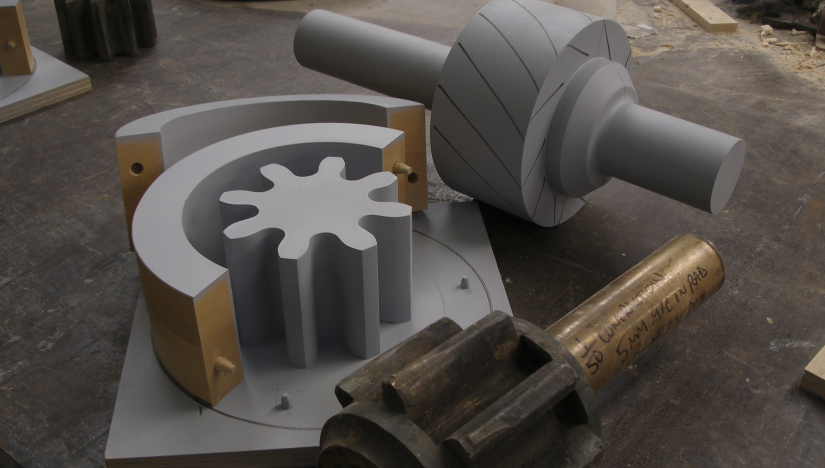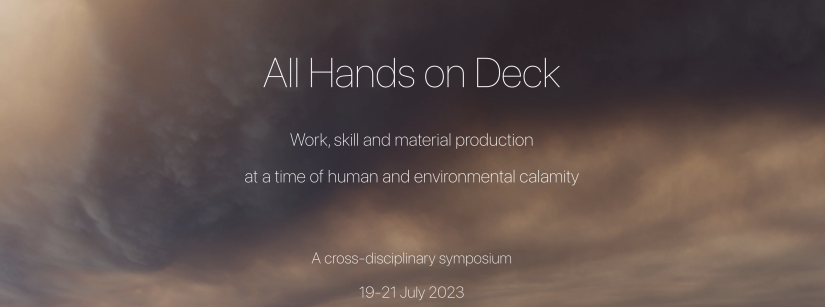Senior Lecturer Dr Jesse Adams Stein is an expert in Australian design and manufacturing history and the ways in which workers and industries adapt to deindustrialisation and technological change. Her research holds important lessons for the transition to a more sustainable and successful Australian manufacturing industry.

Dr Jesse Adams Stein specialises in the 'less fashionable areas of material practice and design'. Photo: supplied.
What are your areas of expertise?
I’m a design researcher and oral historian and I specialise in the less recognised, or less fashionable areas of material practice and design. So, things like craft skills, trades, and workplace experiences, engagements with technology and the consequences of deindustrialisation. I look at those experiences partly through the lens of material culture, but also via detailed human stories. That is, through oral history, by uncovering personal experiences of deindustrialisation and technological change.
Can you tell me about your current research?
My Australian Research Council DECRA project ‘Makers, Manufacturers & Designers: Connecting Histories’ looks at the relationship between the design industry, local manufacturing and technical trades. Reflecting on the second half of the 20th century, I look at how that relationship changed with the process of deindustrialisation in Australia. Offshoring of manufacturing and the digitisation of design processes, for example.
One of the most interesting things is how it was not so long ago that we had generative connections between vocational education, design and local manufacturing, and you can trace this through people's career pathways. For example, people who might have trained in technical colleges, they may have initially worked in manufacturing, but now they are contributing to Australia's creative industries, or to design or education. So, there are these fascinating creative cross-fertilisations of practice, knowledge and skill that happen when you have a viable and dynamic onshore manufacturing sector, combined with a well-funded vocational education sector.
There are these fascinating creative cross-fertilisations of practice, knowledge and skill that happen when you have a viable and dynamic onshore manufacturing sector, combined with a well-funded vocational education sector.
Dr Jesse Adams Stein
In discussing the future of Australian manufacturing, why is it important to reflect on the past?
I think it's important to understand at least the last 50 years in Australia in order to understand where we are now. I’m quite interested in the changes that happened in the 1980s in terms of ‘economic rationalism’ (or the rise of neoliberalism), the opening up of Australian trade internationally, and what that meant for what happened to Australia.
Now of course, we have different technologies, different power relationships, different ways of doing business, different ways of working. So, it's not about trying to return Australia to a kind of mythical state where everything is ‘made in Australia’. But it's about thinking about when we did have a larger manufacturing sector and a better funded vocational education sector – what was possible, what was working, and what can we learn from those past experiences that we can build into how we transform the present?
When I think about the future for Australia, if we were to coordinate industry policy, so that design, manufacturing, and skills training are really built together coherently, and these policies align with energy policy, both in terms of development of technologies and jobs, and changing over to a renewable energy grid, then there is real potential for positive developments.

Dr Stein's research project 'Reshaping Australian Manufacturing' focused on the Australian engineering pattern making trade. Photo: Dolman Pattern & Model Makers.
What excites you about the research you do?
It is a great privilege to undertake oral history interviews, I get to hear people’s life stories. And that’s incredibly interesting, no matter who you are. And there are always these wonderful connections between broader historical patterns and an individual's life story. I've learned so much from just talking to ordinary Australians about what they do. People are a lot more creative than we often give them credit for.
Also, we're now in a moment in Australian political history where it feels like real change might be possible, finally. This moment, right now in 2022 after a change in federal government – it's a super exciting time to be contributing to discussions about reforms to national industry policy.
Who stands to benefit from your research?
Well, I hope that workers can benefit from us all having more nuanced ways of thinking about work and skill, and I hope we can become thoughtful about the role of industrial tradespeople and the knowledge that they hold. I’d like to see more respect and remuneration given to people who have technical and trade skills – from weavers to engineering patternmakers (and everything in between).
What experiences explain how you came to be a design researcher?
I've always been interested in design and architecture through my parents. Not that either are designers or architects, but my father originally wanted to be an architect (at high school they told him he wasn’t good at maths so 'he’d have to do law'). When I was growing up we spent a lot of time going to museums, talking about objects and talking about the built environment. There's a certain sense of rigour and intellectualism that both my parents have, which aligns with an academic pathway, even though that wasn't their careers. My mother nearly did a PhD in the psychology of architecture, but she met my dad and had me instead. So maybe I'm fulfilling her aims in that regard.
How has your research evolved?
I’m very cross-disciplinary. I'm not strictly a design historian, I've delved into labour history, certain parts of sociology, human geography. Right now I’m very involved in contemporary questions about industry policy that puts me in another disciplinary framework. It's always changing as the issues change, and as my interests evolve. Rather than trying to pull the material into a discipline, I follow the material.
This moment, right now in 2022 after a change in federal government – it's a super exciting time to be contributing to discussions about reforms to national industry policy.
Dr Jesse Adams Stein
How does your research intersect with the topic of sustainability?
I co-lead an ongoing project called Repair Design (with Assoc Prof Alexandra Crosby), which looks at different ways of understanding problems of repair in an Australian context. We’re interested in questions of e-waste, mass-production and over consumption of material objects, particularly technologies, and the challenges of product repair. I've been involved in discussions about what kinds of legislative change or regulatory change we need to make repair a more possible thing to do, for example with appliances and small technologies, in order to slow down the disposal of materials (such as rare minerals and plastics) to the waste stream.
What’s next?
As part of my DECRA I'm also running an oral history project in association with the National Library of Australia called ‘Makers, Manufacturers and Designers’. I'm interviewing people from a range of trade, creative and technical backgrounds including textile patternmakers, mould makers, former wallpaper colourists, industrial draftspeople, arts technicians, former manufacturing workers. I have a co-interviewer Nikki Henningham, who is interviewing people in South Australia, the ACT and Victoria, and I’m interviewing people in NSW. The interviews will go into the National Library's collection and will inform my research. Together, these people's stories point to much larger dynamics related to that late 20th century connection between Australian design, vocational trades, manufacturing and the creative industries.
I'm also collaborating with Dr Chantel Carr, a human geographer at the University of Wollongong, to produce a cross-disciplinary symposium that will take place at UTS in July 2023. Chantel and I have similar research interests in terms of trade skills, craft and industrial work. Titled ‘All Hands on Deck’, the symposium will look at the relationship between work, skill and material production in the context of the coming social and environmental crises. It asks the question: how can we reimagine work and skills to preparing for the disasters that are potentially to come? This might mean mitigation, resilience and capacity building. The skills could be everything from practical making skills, to repairing skills, to the care economy (etc). We’re very excited to be bringing Professor Alice Twemlow to Australia for it, and will also have online keynote from Emeritus Professor Tim Ingold. The good news is that the Call for Papers is still open! It closes on 25 July 2022.
Dr Jesse Adams Stein is a Senior Lecturer in the UTS School of Design. She was awarded an Australian Research Council (ARC) Discovery Early Career Research Fellowship (DECRA) which commenced in July 2021.
Visit the Faculty of Design, Architecture & Building
● Study with us
● Explore our research
● Partner with us


